- Botanical characteristics
- Features of growth
- Vegetable raw material procurement
- Plant varieties
- Pharmacological action of a useful plant
- Indications and contraindications for use
Wormwood is a herbaceous or semi-shrub plant that grows throughout our country. It can be recognized by the characteristic violet color of the stem and leaves, as well as by a sharp specific odor. Wormwood is harvested in the middle of summer during budding or flowering for various needs. A useful plant is used for scaring home and garden pests, preparing fragrant tinctures, and some species are planted to decorate the infield area. But the main use of wormwood - treatment of pathologies of the gastrointestinal tract and purification of the body of parasites.
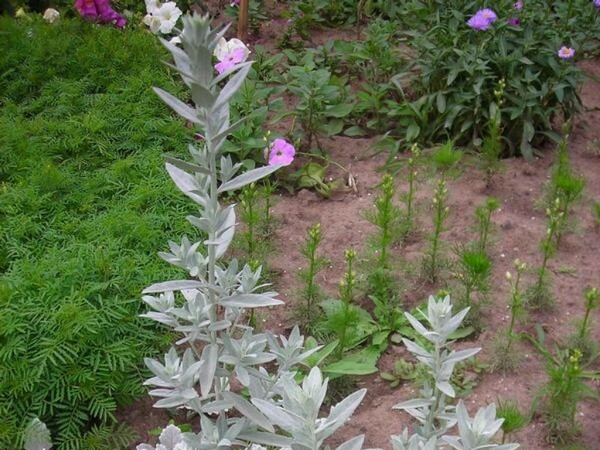
Botanical characteristics
Depending on the species, wormwood is a low herbaceous plant or half-shrub with a powerful stalk equipped with a thick root. In the latter case, it grows over one and a half meters. Dacha and truck farmers uproot the wormwood, as the grass can quickly spread throughout the site due to its unpretentiousness, resistance to unfavorable external and internal factors.
It's interesting: Pharmaceutical production sows sagebrush in large areas on an industrial scale, as the plant is a part of many fees and medications for indoor and outdoor use.
How does the wormwood medicinal grow in the middle and northern latitudes of our country:
- the stem of the plant is upright, as it grows branched. A characteristic feature of this part is the presence of tiny silvery villi;
- root of wormwood is powerful and short, capable of strong branching and gradually lignifying;
- leaves are attached to the stalk using thin petioles. In the upper part of the plant the leaves are elongated, simple in shape, and in the middle - double-sided, sessile, separate;
- blooms from the middle of summer, covering with tubular yellow flowers-baskets, which are collected in panicles;
- in August-September begin to form oblong, wedge-shaped, thinly seeded achenes, in which fruit ripens.
Wormwood exudes a strong aroma and has such a bitter taste that it is avoided by animals on pastures. During growth, substances are released into the surrounding space, the presence of which destroys nearby herbs and shrubs. Here is what the ordinary wormwood looks like in the photo:
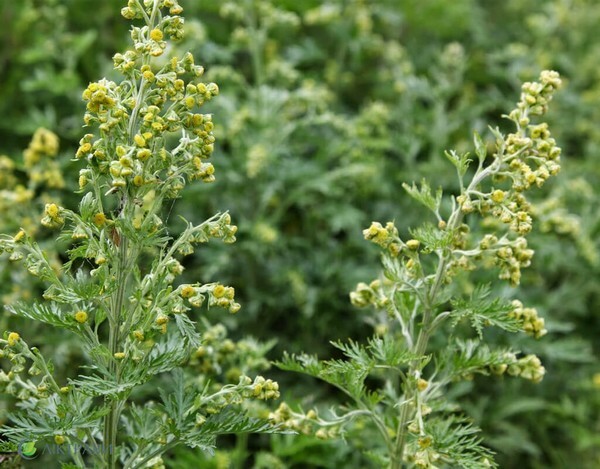
Features of the growth
There are about 200 species of wormwood on the territory of our country, and only some of them are cultivated. Herbs and shrubs are found on the fringes of forests, along the banks of water bodies, in the steppes and even deserts. Where wormwood grows:
- North Africa;
- Western and Central Asia;
- Transcaucasia;
- North and Central America;
- Kazakhstan.
Traveling to the east and south of the country you can see whole thickets of low-growing species of wormwood, growing on scanty stony soils. The plant is not exacting to the composition of the soil and the amount of moisture, it is resistant to drought and squally winds.
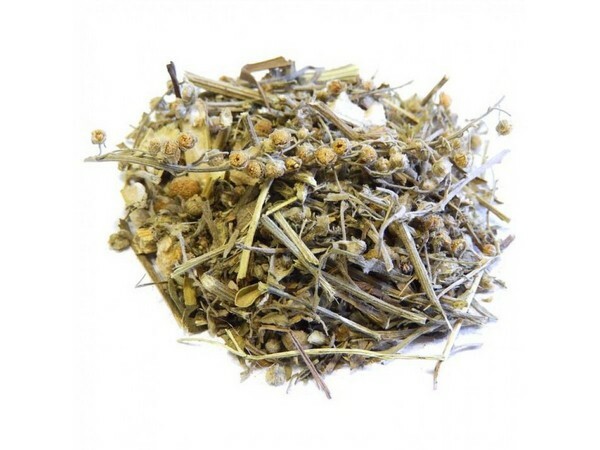
Vegetable raw material procurement
A medicinal herb preparation is carried out when wormwood blooms. This time varies depending on the place of growth. In southern regions, the collection begins already at the beginning of summer, and in the northern latitudes the harvest is postponed until the end of July and beginning of August. To prepare infusions and decoctions, the upper part of the plant( 10-15 cm) is cut with a sharp knife or sickle. Dry wormwood in a dark, well-blown place. If only young leaves are required for treatment, the optimal harvesting time is the budding period.
Roots are harvested in early autumn, when they accumulate the maximum concentration of biologically active and nutrient substances required by wormwood of a long harsh wintering.
Warning: Do not pick wormwood together with the root when collecting medicinal herbs or leaves. The plant multiplies perfectly by self-seeding, and next summer it is possible not to be engaged in search of a half-shrub, but immediately proceed to harvesting in the same place.
Before drying the herb, wormwood should be carefully scraped and rid of rotted parts or those that are affected by pests. Otherwise, the plant can rot, lose a significant part of its therapeutic properties. Store the dried and shredded wormwood in linen bags in a dark, dry place.
Species of the plant
Most species of wormwood have healing properties. Even the one that landscape designers decorate parks and public gardens, forming quaint crowns. The medicinal plant is planted not only for the further preparation of preparations, but also for obtaining valuable essential oils. Many kinds of wormwood are suitable for these purposes, but the greatest concentration of biologically active substances is found in the Chernobylnik.
Quartz wormwood
It grows in the dry climate of the southern regions as a short, long half-shrub. This species is usually grown to produce an essential oil that exhibits bactericidal activity. Quartz wormwood is a part of the gastric collection, and in folk healers use it as:
- anthelmintic;
- for the healing of lesions on the skin and mucous membranes.
A healer and infusion healers treat pathologies of the musculoskeletal system and skin diseases due to analgesic, anti-inflammatory and antimicrobial properties of lactone santonin and essential oil. Quartz wormwood belongs to the most poisonous plant species from the family of complex flowers.
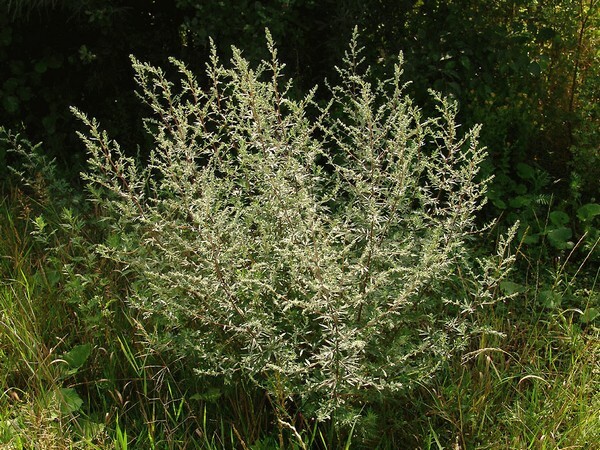
Chiropter, or Artemisia vulgaris
A tall shrub is considered a weed and is mercilessly destroyed. Artemisia vulgaris contains many essential oils, micro- and macroelements, flavonoids and organic acids. The bitter taste of the chernobylnik is not as pronounced as in other species, and the effect on the human body is milder. Therefore, this type of wormwood is often found in recipes of official and traditional medicine, and its infusions are used as a single component therapy:
- increased anxiety and nervous excitability;
- dyspeptic disorders, provoked by excessive gassing.
These wormwood sage worms treat eczema and psoriasis, they are used to reduce the functional activity of the pancreas. From vegetable raw materials, an essential oil is obtained by distillation, which has diverse therapeutic properties. It should be used with caution because of some toxicity.
Note: The Chernobylnik is used to impart a peculiar smell and taste to the game dishes. This kind of wormwood comes along with oregano, basil and rosemary in the composition of a spicy mixture for the preparation of meat dishes and vegetable garnishes.
Lemon Artemisia
This species of wormwood belongs to the semi-shrubs and can reach a height of 150 cm. The straight stem is adorned with openwork branches and leaves, exuding a strong lemon flavor due to the essential oil contained. The antimicrobial and anti-inflammatory properties of the biologically active compound allow the plant to be used in folk medicine for the treatment of:
- of certain forms of tuberculosis;
- respiratory pathologies of the upper and lower respiratory tract;
- of bacterial asthma.
Lemon wormwood is cultured to produce essential oil. He actively uses distillery and confectionery industry, perfumery and cosmetology. In Europe, the practice of adding fresh young shoots and leaves to salads, marinades, sauces to give them a specific bitterness and a delicate lemon flavor. A pinch of wormwood is mixed into a dough for baking biscuits, muffins, pies.
Annual wormwood
A low plant with leaves of rich purple color grows in Asia and in North America. But the plant began to be cultivated everywhere after the discovery in its composition of sesquiterpene lactone artemisinin. The organic substance is capable of reacting with iron compounds with the release of the final product, atomic oxygen. This process has a negative effect on cells of benign and malignant tumors. Therefore, sagebrush is used in official and folk medicine as an anticancer agent. The plant also contains:
- flavonoids;
- organic and inorganic acids.
This allows to include one-year-old wormwood in the collection of fees for the treatment of pathologies that occur against the background of a febrile state and sudden rise in body temperature - malaria, viral and bacterial infections.
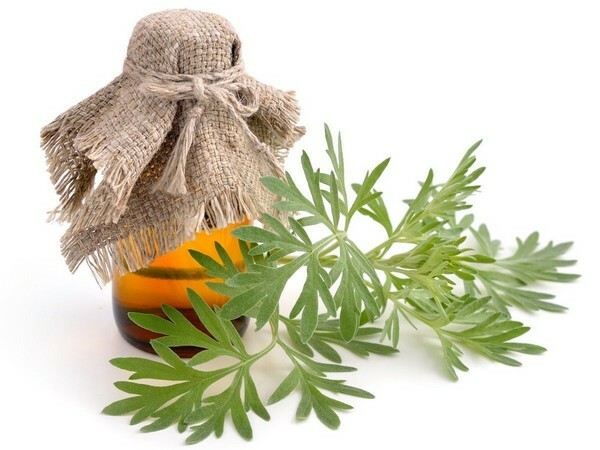
Pharmacological action of a useful plant
The medicinal properties and contraindications of wormwood determine its chemical composition. In leaves and grass contains a huge amount of biologically active substances, which can be used in the therapy of virtually all known diseases. But the plant is valued in medicine for the presence of the following substances that are rarely found in nature:
- abstinin;
- capillin;
- anabsintin;
- gayyanolidy atabsin and arborescin.
Also in all types of wormwood contain phytoncides, flavonoids, essential oils, tannic and resinous substances, micro and macro elements, phytoestrogens and vitamins. This combination allows the drug forms of the plant to exhibit the following therapeutic activity:
- antimycotic;
- choleretic;
- is antispasmodic;
- antiulcer;
- is antimicrobial;
- is an anti-inflammatory;
- antiseptic;
- is bactericidal;
- is a disinfectant.
In the treatment of bronchopulmonary pathologies, all the medicinal properties of wormwood are involved. The use of infusions can stop the spread of the inflammatory process, reduce the severity of symptoms of general intoxication. At the same time, the body's resistance to infectious agents increases, and the general health improves due to the toning properties of wormwood.
Tip: When choosing a shampoo for oily dandruff, you should pay attention to the remedies containing the wormwood extract. This plant is able to reduce the production of glands secretion of glands.
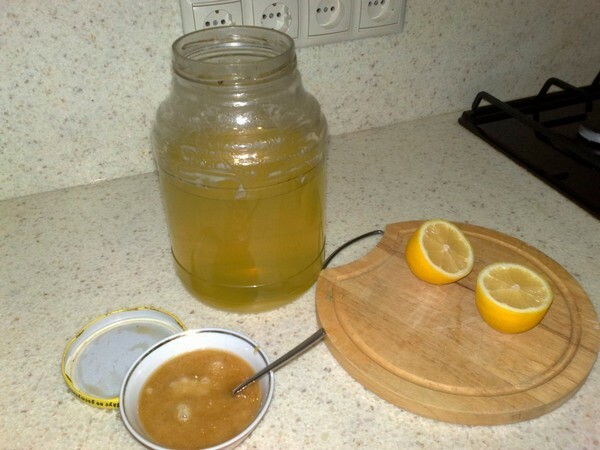
Indications and contraindications for use
When deciding to use one of the wormwood species for the treatment of a chronic disease, you should consult a doctor of narrow specialization. The fact is that a wide therapeutic spectrum of the plant's action can provoke unwanted side effects. The doctor will give certain recommendations to avoid the development of events in such a negative scenario. It may be necessary to reduce single and daily dosages or simultaneous reception of pharmacological preparations.
What treats wormwood:
- endocrine disorders: thyrotoxicosis, diabetes, obesity;
- respiratory diseases: tonsillitis, bronchiolitis, bronchitis, tracheitis, sinusitis;
- gynecological pathologies: painful menstruation, climacteric syndrome, uterine fibroids, andeksit;
- neurogenic disorders: emotional instability, depressive state, increased anxiety and nervous excitability, neurasthenia;
- skin and mucous membrane diseases: furunculosis, trophic ulcers, allergic rashes, seborrheic dermatitis.
Recommendation: Infusions and decoctions are indicated for chronic pathologies of the urinary system: cystitis, glomerulonephritis, urethritis, pyelonephritis. Wormwood dosage forms normalize urination, contributing to the elimination of pathogenic viruses and bacteria, and also have an anti-inflammatory effect.
The use of wormwood is prohibited when hypersensitivity to the plant, internal bleeding, acute inflammatory processes in the stomach and bladder. Broths and infusions are not used in the therapy of pregnant women and women breastfeeding a child. Also, wormwood is not used to treat children under the age of 12 years.
Glaive invasions
If the rules of personal hygiene are not respected, the probability of helminth infection is high, which helps the wormwood after 10-14 days of application. The plant destroys the following types of parasitic worms:
- hepatic fluke, cat litter, pulmonary flukes;
- wide ribbon, pork thistle;
- whipworms, pinworms, roundworms.
To purify the body of worms, wormwood powder is used. You can prepare and use it in the following way:
- Place dry wormwood grass in a porcelain or wooden mortar and grind it with a pestle until powdery.
- After 2 hours after dinner, stir the tablespoon of the drug in 200 ml of carrot juice and drink.
If bitter juice causes disgust, folk healers recommend placing powder in the bread crumb and swallowing.
Digestive diseases
Broth and infusion of wormwood help to quickly eliminate dyspeptic disorders - bloating, nausea, epigastric pain after eating. These dosage forms prevent the spread of inflammation in the stomach and intestines, normalize the exchange of proteins, fats, carbohydrates. How to prepare medicinal drinks:
- Add a tablespoon of dry herbs to a teapot and pour a glass of boiling water. Leave for 1-2 hours, filter and drink 0.2 cups 2 times a day after meals;
- Put 3 tbsp in a saucepan.spoonful of wormwood and pour 4 cups of hot water. Bring to a boil and simmer under the lid for 15 minutes. Cool drain, drink 0,5 glasses 3 times a day after meals.
At desire it is possible to add at brewing in infusion or broth the plants improving digestion and peristalsis - mint, balm, St. John's wort, dog rose, elecampane. And with the treatment of wormwood gastritis with a low acidity, the flavor of the drink can be improved by floral honey.
